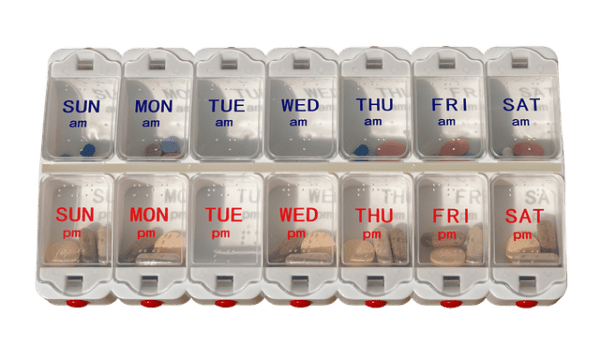Parkinson’s disorder can be incredibly challenging to manage. The progression of the disease and its complications can make Parkinson’s very difficult for patients and clinicians. In addition to the disease itself, medication administration in Parkinson’s can provide additional hurdles to navigate. Here are some of the most common challenges I’ve seen in clinical practice associated with Parkinson’s medications.
Sinemet is the mainstay in the management of Parkinson’s symptoms. Because of the relatively short half-life and the narrow therapeutic window of Sinemet, the drug often needs to be dosed frequently. When you dose a medication three, four, or more times per day, this can upset the schedule of some patients. If a patient doesn’t get their dose on time, it may result in rigidity or other Parkinson’s symptoms. Give it too soon on top of other doses and it could result in higher drug concentrations and adverse effects like nausea, vomiting, and psychosis type symptoms. I discuss dosing a little further in this previous post.
Dietary challenges can exist as well. Sinemet absorption can be altered by protein intake. This is something to monitor, particularly if a patient is reporting an increase in Parkinson’s symptoms in an around their mealtime dosing.
The adverse effect of nausea can present problems in medication administration. Patients may be reluctant to want to take their usual medications if something is upsetting their stomach. Sinemet can cause significant GI upset in a dose-dependent fashion.
If a patient is taking a COMT inhibitor, remember that it must be taken with Sinemet. This can also lead to challenges in medication administration timing as it requires the patient/caregiver to remember this. Entacapone helps preserve levodopa and thus enhances its effects.
As Parkinson’s progresses, swallowing difficulties can be problematic. As far as medication administration is concerned, this means that pills may be unable to be swallowed for some patients. Because of this, we often have to crush medications or use alternative dosage forms. This is definitely something I would assess with patients who are in their own homes and are self-administering their medications.
What other medication administration challenges have you seen in your Parkinson’s patients?
- 30 medication mistakes PDF
- 18+ Page Drug Interaction PDF
- 10 Commandments of Polypharmacy Webinar based on my experiences in clinical practice



A big problem is when patients go into hospital and their usual tablet taking times don’t coincide with the times of drug rounds. If the patient can self administer they can hold onto their own medication and take it as usual. Otherwise there needs to be special arrangements so they don’t suffer long gaps between doses which can leave them with severe symptoms.
This is so true and happens with most patients in general when admitted to the hospital. What arrangements would you suggest to the nurse, doctor or pharmacist?